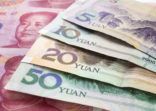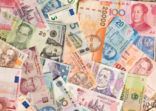Assets in China’s retail mutual fund industry has dropped to RMB 16.9trn ($2.42trn) as of the end of June from an all-time high of RMB 17.78trn in April, according to data from the Asset Management Association of China.
The data shows that assets were dragged down by money market and fixed income products. In June alone, money market fund assets saw the largest decline of RMB 860bn, while the AUM of bond funds was down RMB 250bn.
Fund breakdown, total AUM (in RMB trn)
| Equity | Bond | Money market | |
| Jan-20 | 1.34 | 2.83 | 7.5 |
| Feb-20 | 1.4 | 2.96 | 8.08 |
| Mar-20 | 1.41 | 3.08 | 8.2 |
| Apr-20 | 1.49 | 3.43 | 8.62 |
| May-20 | 1.50 | 3.37 | 8.43 |
| Jun-20 | 1.54 | 3.12 | 7.57 |
Source: Asset Management Association of China.
Negative returns and fund redemptions have resulted in the lower AUM of both fund categories, according to Chloe Qu, Shenzhen-based manager research analyst at Morningstar.
“The decreasing total AUM of China onshore funds is primarily driven by outflows from bond funds and money market funds,” Qu told FSA.
She added that many of the fixed income products also posted negative returns since May.
“Money market funds also saw record-low yields and many of the products’ yields dipped below bank deposit rates,” she said.
Equity products
On the flipside, assets of equity products increased RMB 40bn in June, according to Amac data.
“Investor appetite for equity products is now back after seeing the strong stock market rally in recent months,” Qu said.
Echoing Qu, Ivan Shi, director of data analytics at Z-Ben Advisors, told FSA that many retail investors transferred money from money market funds to equity-focused products.
“From May, the pandemic started to settle down in the mainland and the CSI 300 has been quite bullish recently,” he added.
Newly launched equity products continue to attract assets. During the second quarter alone, 101 equity products were launched and collectively attracted RMB 74bn during their IPO period, according to data from Morningstar.
However, not all new funds have attracted sizable assets from investors. Of the new 101 funds, only 14 funds were able to raise assets more than RMB 1bn. At the time, the E Fund Equilibrium Growth Equity Fund raised the most assets (RMB 26bn), followed by the E Fund Consumption Select Equity Fund (RMB 7.9bn).
The sizable assets these new funds attracted do not reflect the overall increase of the AUM in equity funds since April, however, Morningstar’s Qu noted.
“Although the industry continues to see blockbuster new fund launches, the total AUM didn’t grow much since April, as many investors were redeeming their shares from existing holdings to purchase newly launched funds,” she explained.

















